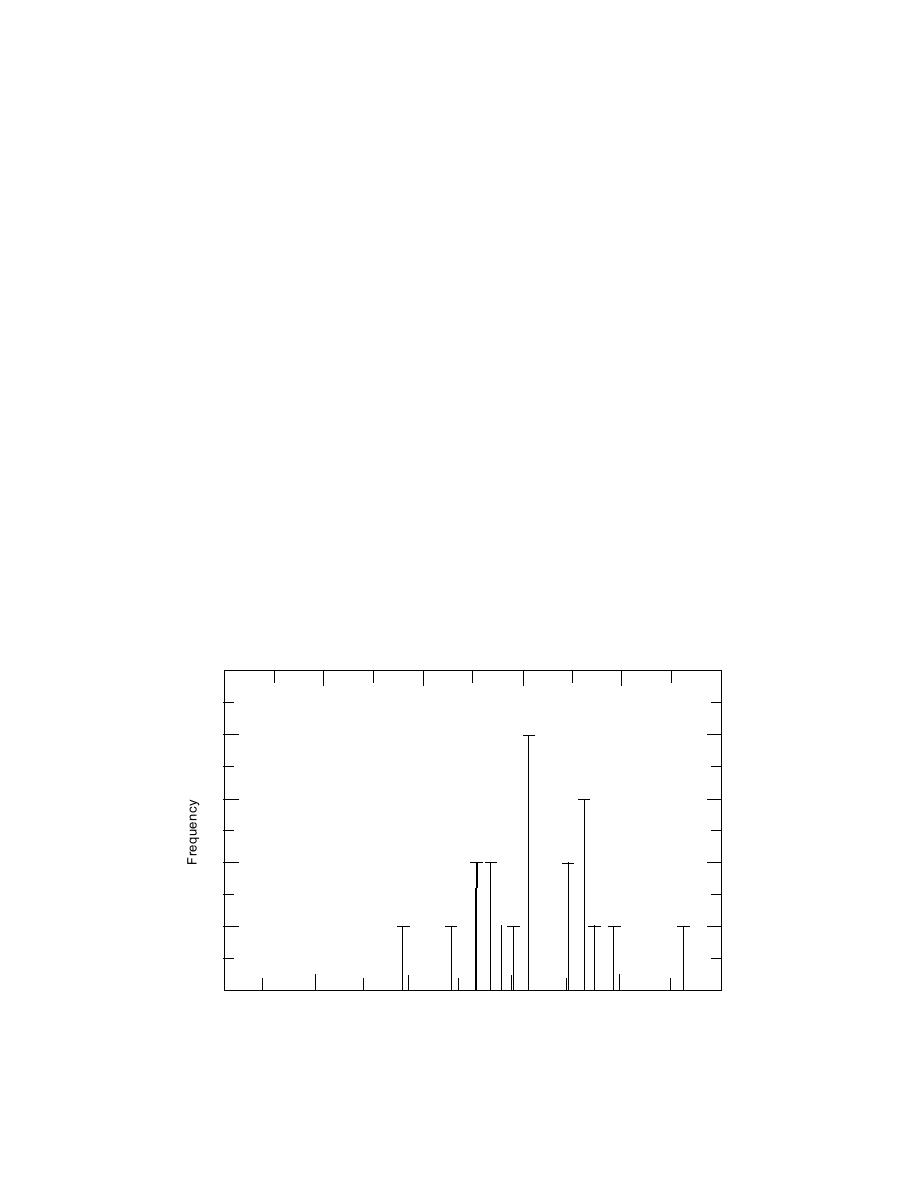
Using the same method, White and Lawson (1992)
mate porosity of breakup ice jams based on the
calculated an average porosity of 0.59 for a late-
energy and mass balance of an ablating ice jam at
winter frazil deposit on the Tanana River, Alaska.
the confluence of the Liard and MacKenzie Rivers
This compared favorably to porosities determined
(Northwest Territories) in 1983. He reported an
by direct measurement of ice and water volumes
average porosity of 0.35. Because the uncertainty
in bulk samples, which ranged from 0.35 to 0.77,
of the method is largely attributable to air tem-
perature, he varied his mean temperature by 5C,
with an average of 0.52. Based on field measure-
ments, Shen and Wang (1992) reported porosity
with a resulting range of porosity from 0.26
of 0.4 for a freezeup jam on the Yellow River, China
(warmer water temperatures) to 0.44 (cooler wa-
(no method was specified). Tuthill et al. (1998) sug-
ter temperatures). Upon improving the method
gest a range of 0.5 to 0.7 for frazil pans at freezeup
(Prowse and Marsh 1989, Prowse 1990), the range
of porosity was found to be 0.38 10%, quite close
when using ICETHK. Tuthill and Mamone (1998)
used p = 0.5 when modeling a freezeup jam on the
to the commonly assumed value of 0.4 (e.g.,
middle Mississippi River. Measurements of the po-
Beltaos 1978, 1995, 1999). Michel (1980, 1984) and
rosity of frazil ice deposits formed on trash racks
Tuthill et al. (1998) suggested porosity values of
in the laboratory were made by Andersson and
0.4 to 0.5 when modeling breakup jams. Tuthill et
Daly (1992) using a modified CRREL snow den-
al. (1996) used p = 0.5 in the hydraulic modeling
sity kit. They measured 20 samples and found a
of a breakup ice jam.
mean porosity of 0.67 (Fig. 13).
Grounded jams
Breakup ice jams and ice rubble
Porosity is particularly important in the case of
Weiss et al. (1981) measured porosity for manu-
breakup ice jams that are grounded, because per-
factured ice rubble of different parent ice sheet
meability varies with porosity and hence discharge
thickness. They found porosity ranging from 0.19
will also vary with porosity, affecting backwater
to 0.50, with an average value of 0.34. Higher po-
levels upstream from a grounded jam. Wong et al.
rosity was generally associated with thicker par-
(1985) and Beltaos (1993, 1999) used a theoretical
ent ice. Prowse (1988) developed a method to esti-
model of porous flow presented by Bear (1972) in
which porosity is related to seepage flow:
5
4
3
2
1
0
0.2
0.4
0.6
0.8
1.0
0
Porosity
Figure 13. Porosity measurements of frazil deposits formed on trashracks in the CRREL refrig-
erated flume. (From Andersson and Daly 1992.)
18



 Previous Page
Previous Page
